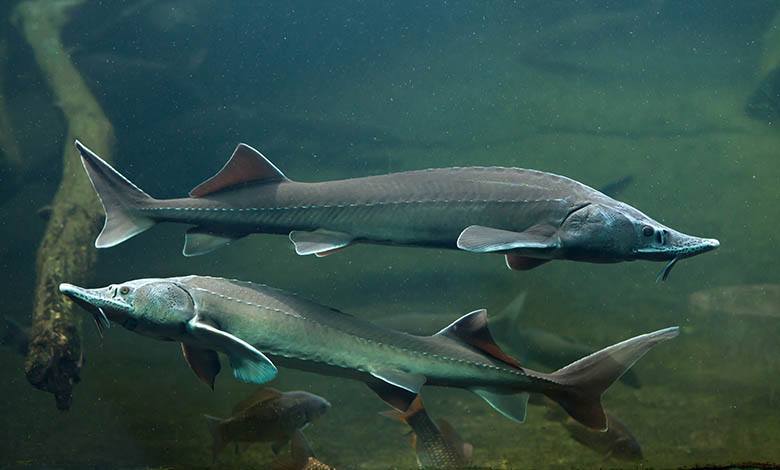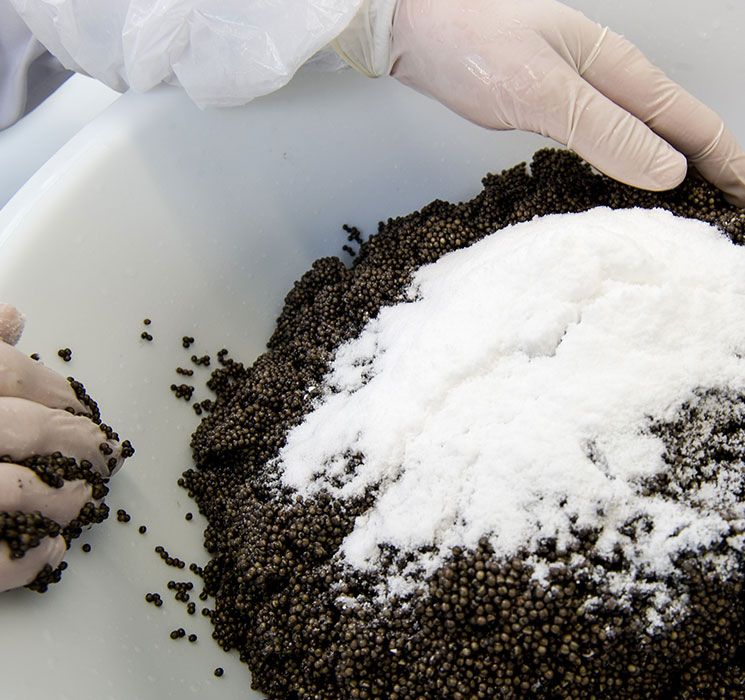You love eating caviar, but how much do you really know about making it? We delve into the world of this delicacy and explore how caviar is made. As luxurious and coveted as it is, seems deceptively easy to make: after all, you just need some fish eggs and some salt, right? It’s not that simple. While the ingredients might be simple, the methods of making caviar are not. Much like aging a fine cheese or selecting the best grapes for wine, there’s an art that goes beyond tossing a little salt on some fish eggs.

What is caviar made out of? Yes, you guessed it, fish eggs, which technically are called roe. The birth of this delicacy — almost literally- begins with the removal of the fish eggs (roe) from the sturgeon. One of the many reasons sturgeon populations have been in such sharp decline is that the most predominant method of caviar extraction from the sturgeon involves the actual killing of the fish (either before or after the removal of the egg sack). The roe is sieved and "filtered" into different sizes, and then carefully cleaned and rinsed. Classification takes place according to size and color and the caviar moves on to the salting step.
The purpose of salting is primarily to preserve the caviar and maintain as much of the 'fresh' flavor as possible. Therefore, the amount of salt used can vary. "Malossol” the most superior type- is prepared with very little salt. Other types can be salted. Although things have changed over the years, one thing remains true: the salt. A special kind of salt is used to prepare caviar, a chlorine-free salt from the Russian Astrakhan Steppe, stored for seven years to ensure the least chlorine content.
How to Make Caviar: Harvesting the Eggs
How caviar is harvested: the first step is fishing or harvesting a female sturgeon ripe with eggs (for a full definition of caviar, see our
What is Caviar section). Caviar is made from the unfertilized eggs of the female sturgeon.
The sturgeon is harvested, which means it’s fished if it’s a wild fish, or harvested if it’s a farmed sturgeon. This is a highly sophisticated process that involves ultrasounds to check the quality and location of the eggs first, and to make sure they’re ready for extraction — sometimes a little sample is extracted with a small scalpel to test the eggs as well.
Once opened, all the eggs are surgically removed from the fish, which in most cases, kills the fish itself — worry not, most times the fish meat is also eaten, and nothing gets wasted! Initially, the eggs are clumped together so they go through a sieving or separation process, a time-consuming manual process. Then, on to cleaning. And here’s where the caviar master’s skill comes into play, as he or she carefully removes the membrane surrounding the eggs and separates them, gently and expertly, so the texture is preserved, and the eggs aren’t crushed. One by one, any damaged eggs are painstakingly removed, and the delicate eggs are then carefully strained and salted.
How to Make Caviar: Salting

Fine caviar is always “malossol”, a Russian term for “little salt”. Salting preserves the fish eggs, extending its shelf life, but it also gives it a wonderful subtle flavor.
Salting is a highly sophisticated manual skill acquired over time: too much salt and the delicate walls of the eggs break, too little of it, and it will spoil and the taste will be off. The highest quality caviar has a salt content of 3% (and sometimes even less). Salt is added to the eggs, left to impregnate, and then washed off. None of this is done by a machine, but by a person, an expert in this very specific process, and one of the most artisanal steps.
How to Make Caviar: Drying, Grading and Tinning
After salting, the eggs are dried over steel racks and then tested so they can be graded. The texture, color, glossiness, size, and many other factors are considered, which will determine the quality and the grade it will get. This is the final step before it is packaged in tins packed tightly with airtight lids and then sold.
How To Make Caviar with Molecular Gastronomy: Spherification
Chances are you’ve encountered a fun and colorful type of caviar in many modern restaurant dishes that are not made of fish eggs at all and are a product of molecular cooking. These are made using spherification, a molecular gastronomy technique of encasing an ingredient in a membrane. This innovative cooking process puts science into cooking, using chemistry and physics to create fun and unexpected shapes and flavors with food.
Molecular gastronomy caviar recipes with the use of this method are very popular and incredibly versatile. Spherification uses sodium alginate (a salt derived from algae) and calcium chloride to create a membrane around the liquid, encapsulating it and creating a small sphere that looks a lot like real caviar, bursting with flavor once you bite into it. Fruit juices, chocolate, cocktails, soups, sauces, and desserts are just a few of the fun and delicious things you can turn into "caviar" using molecular gastronomy.